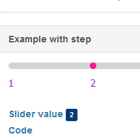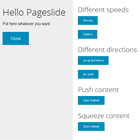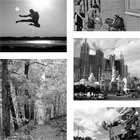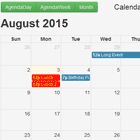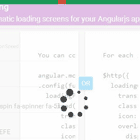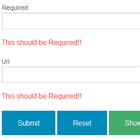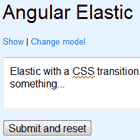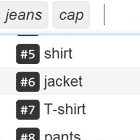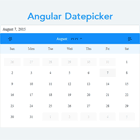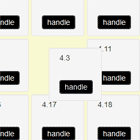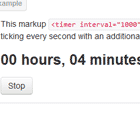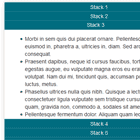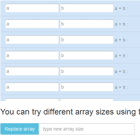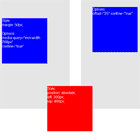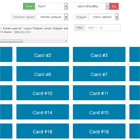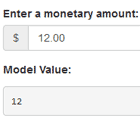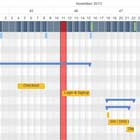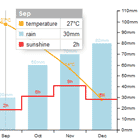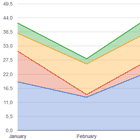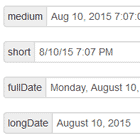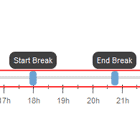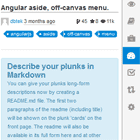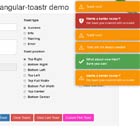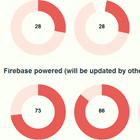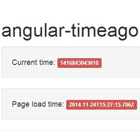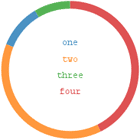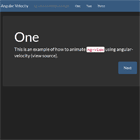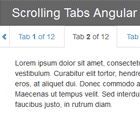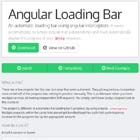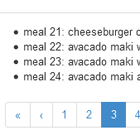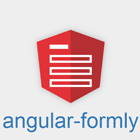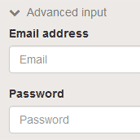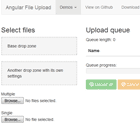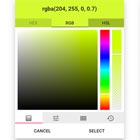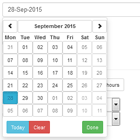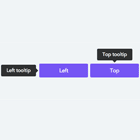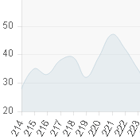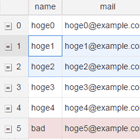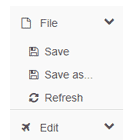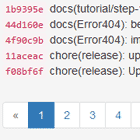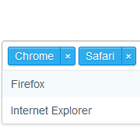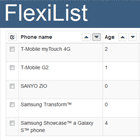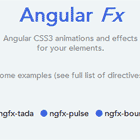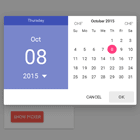Angular Timeline
An Angular.js directive that generates a responsive, data-driven vertical timeline to tell a story, show history or describe a sequence of events.
Demo
Original Implementation (HTML / Javascript)
NG Docs
Inspiration
Installation
- Install the plugin into your Angular.js project, manually or via
bower install angular-timeline --save
- Include
angular-timeline.cssin your app:
<link rel="stylesheet" href="bower_components/angular-timeline/dist/angular-timeline.css"/>
- Include
angular-timeline.jsin your app:
<script src="bower_components/angular-timeline/dist/angular-timeline.js"></script>
- Add
angular-timelineas a new module dependency in your angular app.
var myapp = angular.module('myapp', ['angular-timeline']);
- To define a timeline, do the following (either manually or using ng-repeat on a dataset):
// in controller $scope.events = [{ badgeClass: 'info', badgeIconClass: 'glyphicon-check', title: 'First heading', content: 'Some awesome content.' }, { badgeClass: 'warning', badgeIconClass: 'glyphicon-credit-card', title: 'Second heading', content: 'More awesome content.' }]; <!-- view --> <timeline> <timeline-event ng-repeat="event in events" side="right"> <timeline-badge class="{{event.badgeClass}}"> <i class="glyphicon {{event.badgeIconClass}}"></i> </timeline-badge> <timeline-panel class="{{event.badgeClass}}"> <timeline-heading> <h4>{{event.title}}</h4> </timeline-heading> <p>{{event.content}}</p> </timeline-panel> </timeline-event> </timeline>There is a bit of markup here but <timeline-heading> is optional. <timeline-badge> is for the centre line between the two sides, and should represent the event type that occured.
Notes
-
The demo uses angular-scroll-animate to trigger CSS animations when timeline events scroll into view. It's totally optional to include this or not and is just there for effect.
-
Panels are now designed to float left, then right, side to side. Float right is forced on smaller (eg. mobile) devices.
-
If you define the events in an array and have HTML content to output, use
ng-bind-html={{event.attribute}}and require thengSanitizemodule. -
You can use either the SASS styles directly file under
/distor the compiled CSS files, up to you :) -
If you are using Bootstrap 3 it affects the timeline CSS, so include
angular-timeline-bootstrap.[css|scss]}to re-adjust the offsets e.g:
<link rel="stylesheet" href="bower_components/bootstrap/dist/css/bootstrap.css" /> <link rel="stylesheet" href="bower_components/angular-timeline/dist/angular-timeline-bootstrap.css" /> <script src="bower_components/angular-timeline/dist/angular-timeline.js"></script>Running Locally
- Checkout git repository locally:
git clone [email protected]:rpocklin/angular-timeline.git npm installbower installgrunt serve- View
http://localhost:9000/example/in your browser to see the example.
Contributing
- Fork it
- Create your feature branch (
git checkout -b my-new-feature) - Beautify (
grunt beautify) - Ensure it passes code-checks / tests (
grunt) - Commit your changes (
git commit -am 'Added some feature') - Push to the branch (
git push origin my-new-feature) - Create a new Pull Request
History
- 1.7.0 Changed CSS classes to fix animations in and out (in example).
- 1.6.2 Fixed missing logic in passing
sideattribute declaration (was watching parent scope) - 1.6.1 Added attribute for
side=leftorside=rightto force left or right-handed columns for timeline events. - 1.6.0 Changed
hiddentotimeline-hiddenclass in example anangular-timeline-animations.css. - 1.5.2 Updated dependency used in example
angular-scroll-animatefrom 0.8.0 to 0.9.1. - 1.5.0 Updated dependencies, simplified nested components and improved example. Changed
timeline-nodetotimeline-event. Removedreplace = truein directives. - 1.2.1 Cleaned up dependencies and build steps.
- 1.2.0 Updated example and styling to be more responsive.
- 1.0.0 Initial release
TODO
- Add some tests
Thanks
luisrudge for the original vanilla JS implementation on Bootsnipp
License
Released under the MIT License. See the LICENSE file for further details.

